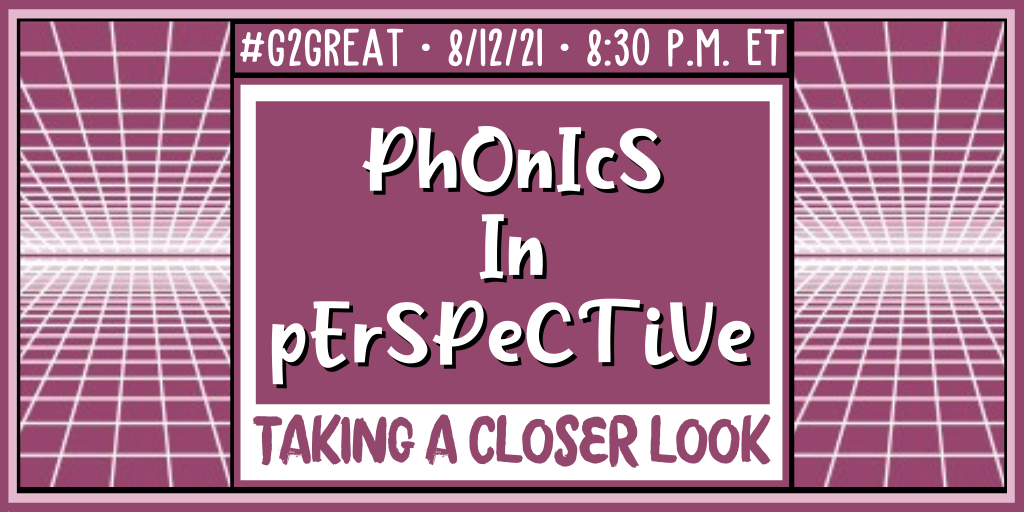by, Jenn Hayhurst

For as long as I can remember there has been an ongoing public debate for how to teach children to read. The “Reading Wars” asked teachers to take a side – are you pro phonics or whole language? Not even a global pandemic could silence it. If anything, it has only gotten worse. Nowadays it is: are you for the Science of Reading or Balanced Literacy? While that may all be well and good for selling newspapers, or getting “likes” over social media, it does little to elevate teacher knowledge or practice. The best way to do that is to engage in a good conversation rather than rigid one-sided debates.
On August 12, 2021 the #G2Great team hosted a chat to take a closer look at how to keep Phonics in Perspective. Teachers from all over came together to share their knowledge and experiences for phonics instruction. We discussed what we know to be true, we listened with the intent to understand, and aspired to build on our existing knowledge base to grow our instructional practice.
What we know to be true
Phonics learning is a strategy that helps readers to match spoken sounds to letters in an effort to decode. Phonics knowledge also helps readers identify common patterns embedded within syllables, this is helpful for both reading and spelling. Teachers of young children know that phonics instruction is important. When it comes to teaching children to read, nothing should be off the the table. Reading is a very complex process, one that requires teachers to differentiate instruction based on the needs of the students in front of them. This is a basic truth that many commercial programs fail to acknowledge and I think that is why so many programs fall short:
Listening to learn and grow instructional practice
During the chat I found myself reflecting on what others had shared about how to keep phonics in perspective. I returned to the Wakelet and gathered some tweets that really helped to clarify what I learned to grow my instructional practice. One takeaway I had was the importance to make room for transfer of learning to occur. Making room for transfer can happen when students: participate in word sorting, interactive writing, shared reading, or independent reading of decodable or more authentic texts. Then my thoughts turned to how important it is to bend the curriculum in order to make room for lots of component work. Finding ways to integrate interactive writing, shared reading, guided reading, and conferring to phonics learning will give students so much repeated practice for their learning of phonics as well as many other important strategies. I also though about the reading writing connection and how that promotes opportunities for phonics learning during reading and writing workshop. Again, I found my thoughts returning to the need to differentiate because reading is complex and there is no one simple “right” way to teach children how to read.
Teachers already know what side to take when it comes to the “Reading Wars” debate. There is no alternative but to be on the side of students, and that means integrating phonics instruction and honoring student centered decision making. Throughout this post many smart educators discussed how to embed phonics instruction for their students in meaningful ways. I am truly so grateful to be able to learn from so many talented and experienced teachers.
